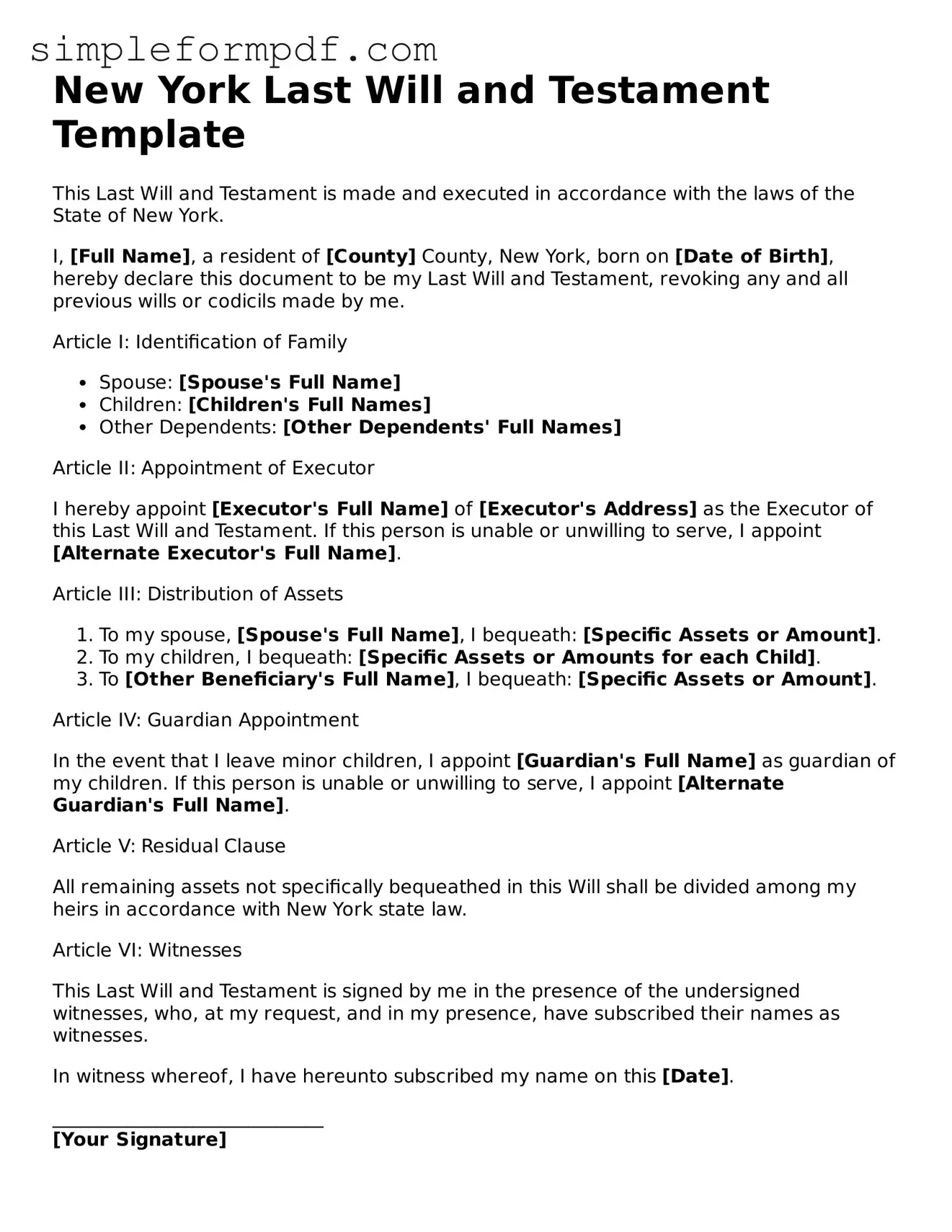New York Last Will and Testament Template
This Last Will and Testament is made and executed in accordance with the laws of the State of New York.
I, [Full Name], a resident of [County] County, New York, born on [Date of Birth], hereby declare this document to be my Last Will and Testament, revoking any and all previous wills or codicils made by me.
Article I: Identification of Family
- Spouse: [Spouse's Full Name]
- Children: [Children's Full Names]
- Other Dependents: [Other Dependents' Full Names]
Article II: Appointment of Executor
I hereby appoint [Executor's Full Name] of [Executor's Address] as the Executor of this Last Will and Testament. If this person is unable or unwilling to serve, I appoint [Alternate Executor's Full Name].
Article III: Distribution of Assets
- To my spouse, [Spouse's Full Name], I bequeath: [Specific Assets or Amount].
- To my children, I bequeath: [Specific Assets or Amounts for each Child].
- To [Other Beneficiary's Full Name], I bequeath: [Specific Assets or Amount].
Article IV: Guardian Appointment
In the event that I leave minor children, I appoint [Guardian's Full Name] as guardian of my children. If this person is unable or unwilling to serve, I appoint [Alternate Guardian's Full Name].
Article V: Residual Clause
All remaining assets not specifically bequeathed in this Will shall be divided among my heirs in accordance with New York state law.
Article VI: Witnesses
This Last Will and Testament is signed by me in the presence of the undersigned witnesses, who, at my request, and in my presence, have subscribed their names as witnesses.
In witness whereof, I have hereunto subscribed my name on this [Date].
_____________________________
[Your Signature]
Witness 1: _____________________________
[Witness 1's Full Name]
[Witness 1's Address]
Witness 2: _____________________________
[Witness 2's Full Name]
[Witness 2's Address]
This template provides a structured way to draft a Last Will and Testament tailored specifically for residents in New York. It ensures clarity in the distribution of assets, appointment of guardians, and naming of executors while offering a compassionate approach to the often sensitive topic of end-of-life planning.
